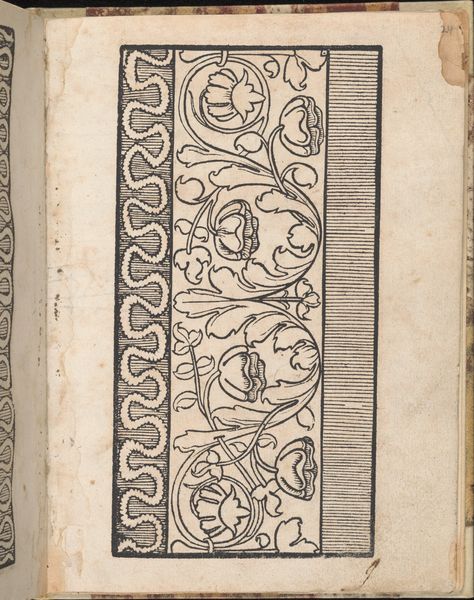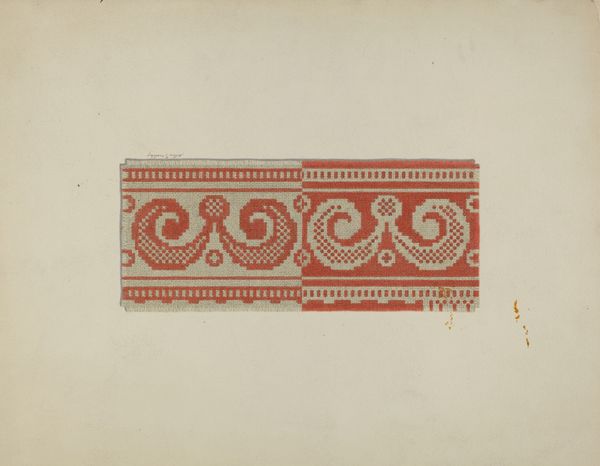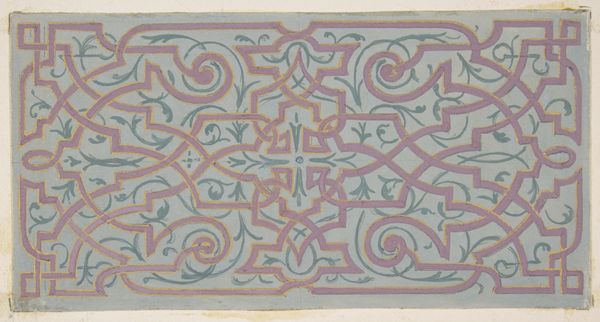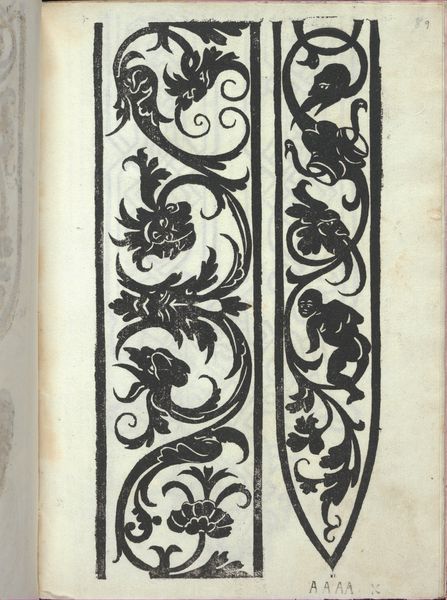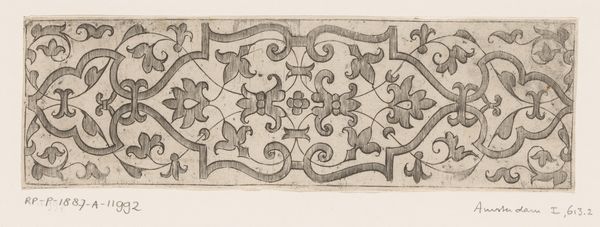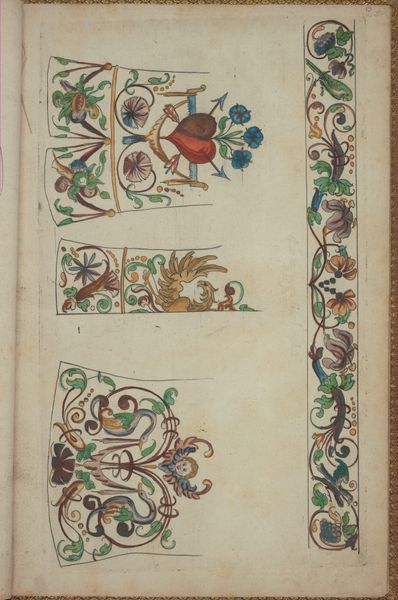
drawing, ornament, coloured-pencil, paper, watercolor
#
drawing
#
ornament
#
coloured-pencil
#
paper
#
form
#
watercolor
#
coloured pencil
#
geometric
#
line
#
decorative-art
Copyright: Public Domain
Curator: Here at the Städel Museum, we have a beautiful drawing by Karl Ballenberger titled "Ornamental Edge". It's rendered in watercolor and colored pencil on paper. Editor: My first impression is one of delicate repetition. There’s a restrained quality, even with the ornamentation, a gentle rhythm created by the alternating shapes and colors. Curator: The lack of a specific date makes it tricky, but understanding Ballenberger's social context is key. During his time, the drive to record historical ornament was high, linked to ideas of national identity and preservation efforts across Europe. Works like this would have played a role in architectural and design fields. Editor: Right. And looking at it materially, it is an object crafted meticulously with simple materials: watercolor, pencil, and paper. The care put into rendering each curve and line, shows not only the design skill but an investment in process. Was this just for practical patternmaking, or something more? Curator: Probably both. He and others produced such renderings for use in design and as almost encyclopedic documentations. There was an active public sphere debating the meaning and purpose of historical styles. The role of art in shaping social and political identities through imagery must have been clear. Editor: Yes. These ornamental drawings, these almost abstracted geometries, represent tangible ideas and even values when mass produced across architecture, furniture, and design, no? It's also fascinating how this breaks what is thought of as "art" when its main function served this of design. Curator: Indeed. These detailed depictions blurred the lines between art and craft, echoing social dialogues of that period that asked about the true nature and public role of artistic imagery. Editor: What's powerful is that such simple material practices became essential visual vocabularies and continue to inspire art today. Seeing the artist’s labor makes us question what ornamentation means both historically and now. Curator: This close examination offers insights into design principles while demonstrating a deep respect for historical aesthetics. I think, looking at it, it shows how artists contribute to larger dialogues through the careful consideration of visual language. Editor: Absolutely. Thinking about materiality and craft reminds us to look beyond beauty to see design as active expression of material culture and visual identity.
Comments
No comments
Be the first to comment and join the conversation on the ultimate creative platform.

